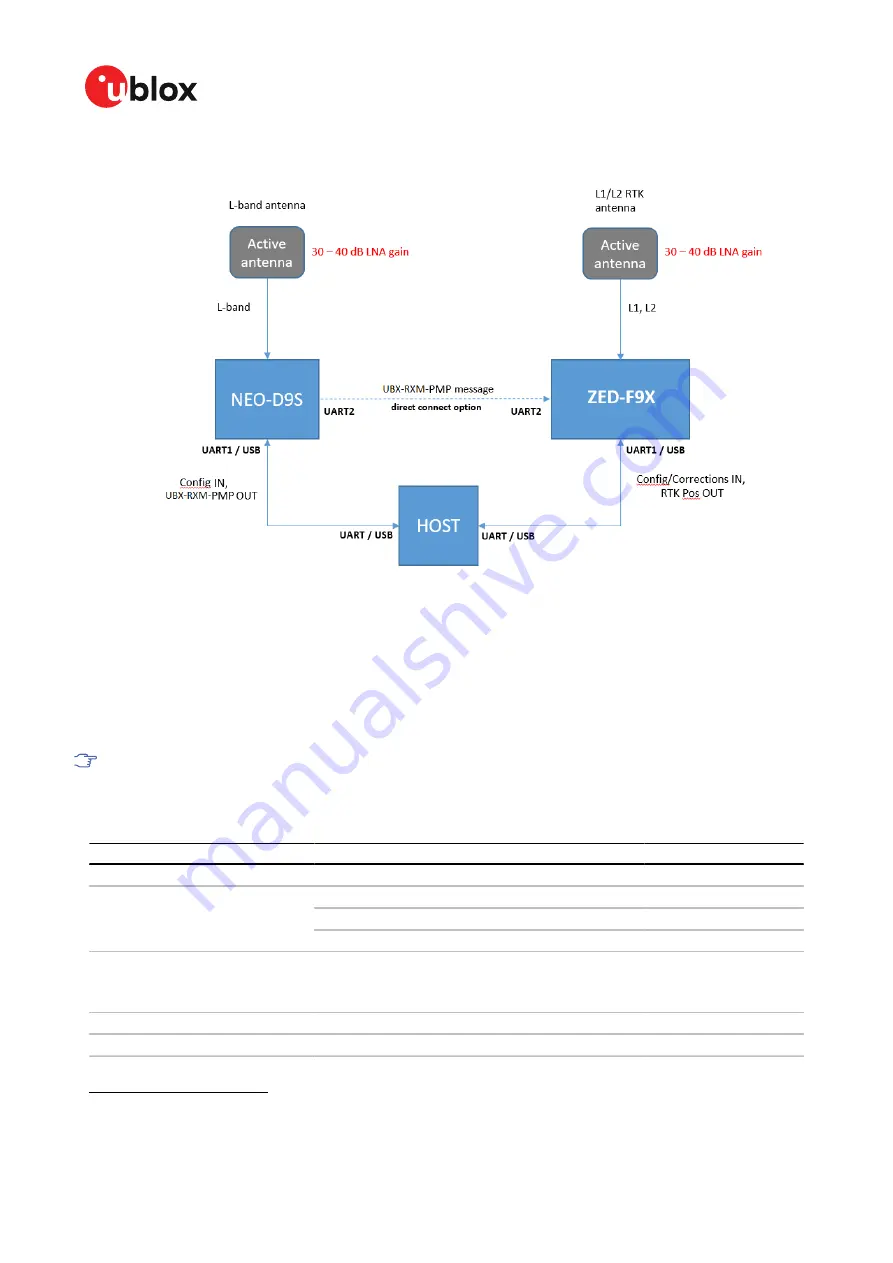
NEO-D9S - Integration manual
Figure 14: Typical recommended separate NEO-D9S and ZED-F9x RF front end and system
L-band refers to the operating frequency range of 1–2 GHz in the radio spectrum. However in this
case we are referring to a corrections receiver that can operate at 1525.0 - 1559.0 MHz (1550.0 -
1559.0 MHz for NEO-D9S-01A). An active antenna is required to provide sufficient low noise gain
at the required correction service frequency and ensure any cable loss does not inpact the antenna
noise figure.
UART2 may be used to provide correction data directly to a high precision GNSS receiver
from the u-blox F9 platform. To check whether a specific u-blox F9 product supports
correction data output by the NEO-D9S, refer to its Integration manual.
Recommended single L-band antenna required specifications
Parameter
Specification
Antenna type
Active antenna
Typical gain
30 dB
Maximum gain
40 dB
Active antenna recommendations
Maximum noise figure
3 dB
L-band antenna gain
4 dBic typical
1525 MHz - 1559 MHz (NEO-D9S-00A/NEO-D9S-00B)
1550 MHz - 1559 MHz (NEO-D9S-01A)
Polarization
RHCP
Axial ratio
2 dB max at zenith
1
Measured with a ground plane d=150 mm
2
The recommended gain is important for good performance
UBX-19026111 - R07
4 Design
Page 25 of 52
C1-Public














































